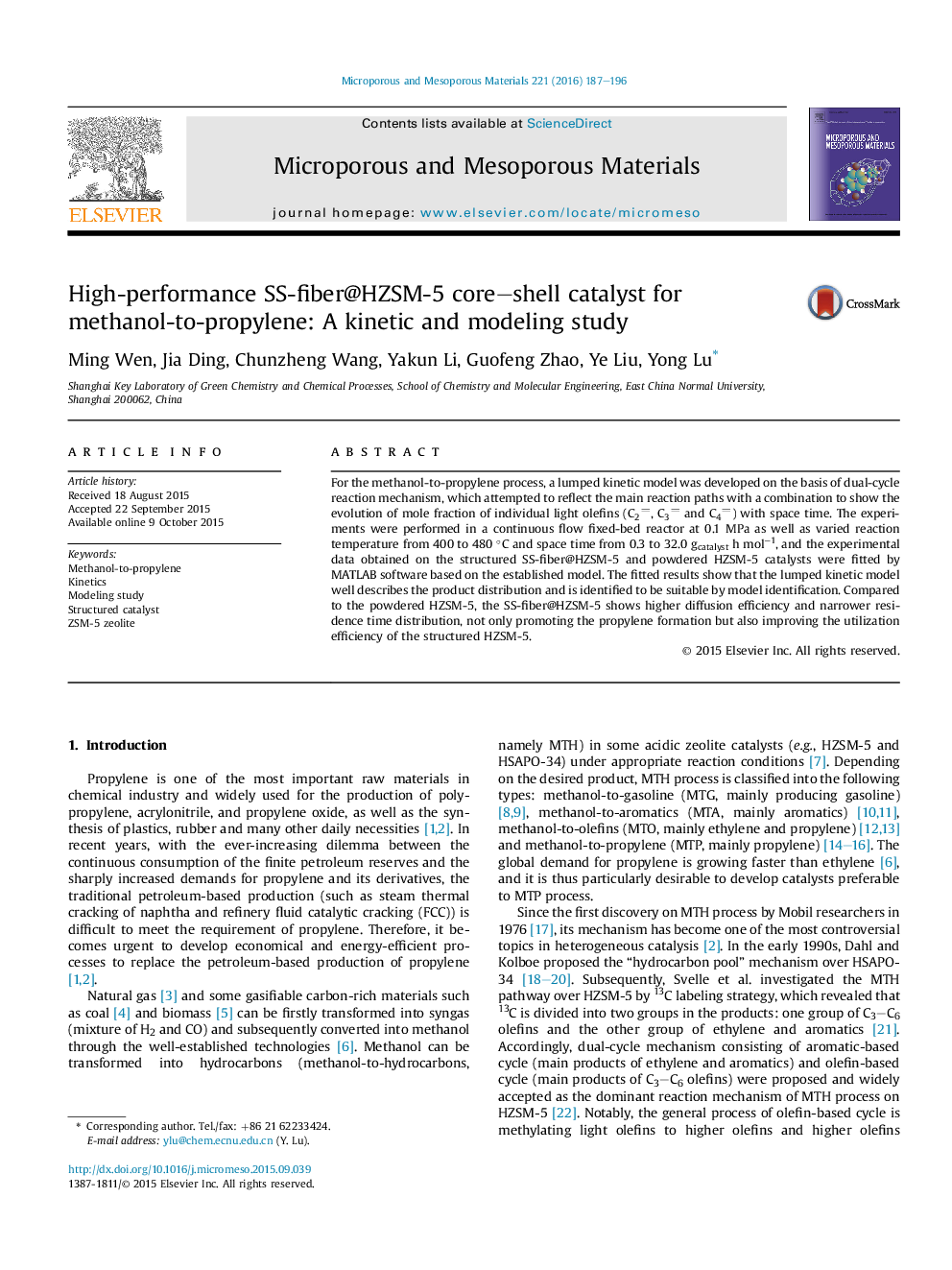| Article ID | Journal | Published Year | Pages | File Type |
|---|---|---|---|---|
| 72329 | Microporous and Mesoporous Materials | 2016 | 10 Pages |
•We established a MTP lumped kinetic model on the basis of the dual-cycle reaction mechanism.•The model shows the evolution of individual olefin and reflects the main reaction path.•Experimental data were fitted by MATLAB software.•Calculated and experimental values of the product distributions basically fitted well.•Structured SS-fiber@HZSM-5 shows acid site utilization efficiency ∼6 times as high as the powdered HZSM-5.
For the methanol-to-propylene process, a lumped kinetic model was developed on the basis of dual-cycle reaction mechanism, which attempted to reflect the main reaction paths with a combination to show the evolution of mole fraction of individual light olefins (C2C2, C3C3 and C4C4) with space time. The experiments were performed in a continuous flow fixed-bed reactor at 0.1 MPa as well as varied reaction temperature from 400 to 480 °C and space time from 0.3 to 32.0 gcatalyst h mol−1, and the experimental data obtained on the structured SS-fiber@HZSM-5 and powdered HZSM-5 catalysts were fitted by MATLAB software based on the established model. The fitted results show that the lumped kinetic model well describes the product distribution and is identified to be suitable by model identification. Compared to the powdered HZSM-5, the SS-fiber@HZSM-5 shows higher diffusion efficiency and narrower residence time distribution, not only promoting the propylene formation but also improving the utilization efficiency of the structured HZSM-5.
Graphical abstractThe SS-fiber@HZSM-5 catalyst shows higher diffusion efficiency and narrower residence time distribution than the powdered ZSM-5, which thus dramatically improves the acid site utilization efficiency and visibly facilitates the propylene yield.Figure optionsDownload full-size imageDownload as PowerPoint slide
